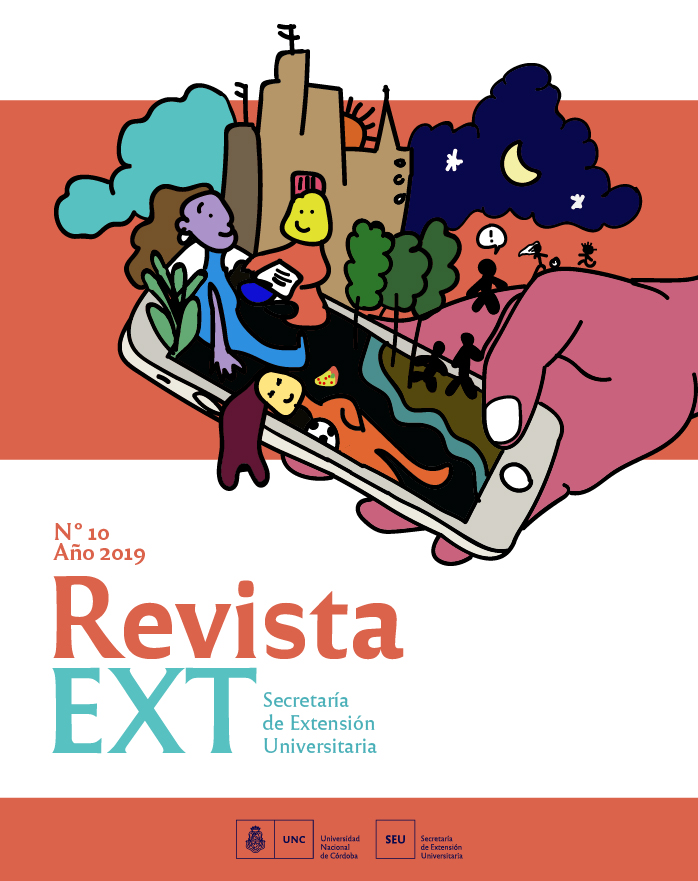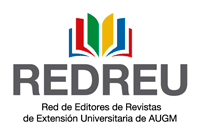Bridges and Snakes: An Extensionist Experience Related to Ethnoherpetology
Keywords:
Extension; Ethnobiology; Local Ecological KnowledgeAbstract
Ophidic accidents constitute an important health issue in the province of Córdoba, Argentina, mainly in small rural communities. Among the causes of these accidents, we can mention the lack of information about prevention measures and on the identification of species of sanitary importance; in addition, these two causes prevail among the population segments where the impact of accidental snakebites is really high. Floods and fires are also relevant causes, whose frequencies may be affected by anthropic matters related to the change in soil use. In this context, a university outreach project was conducted, supported by Córdoba National University. The objective was to promote a mutual exchange of knowledge, between university members and inhabitants of a town called La Serranita, located in Paravachasca Valley, about ophidians in relation to different socio-environmental issues, such as floods, fires and urbanization processes. Through participatory workshops, talks and recreational interventions, it was possible to enquire about the population’s ethno-knowledge regarding the identification standard of poisonous and non-poisonous snakes, their perceptions and usual courses of action toward them. These activities proved key in the provision of tools for the conservation of ophidians and the prevention of accidents.
Downloads
References
Acosta, M., Vignale, N., y Ladio, A. (2015). ¿Qué saben sobre plantas empleadas en medicina tradicional los niños de una escuela primaria de S.S. de Jujuy, Argentina? GaiaScientia Edición especial Etnobiología en la Argentina 9(3): 90-104.
Alberich, T., Arnanz, L., Basagoiti, M., Belmonte, R., Bru, P., Espinar, C., García, N., Habegger, Heras, P., Hernández, D., Lorenzana, C., Martín, P., Montañés, M., Villasante, R., Tenze, A. (2009). Manual de metodologías participativas. Editorial colectiva: Observatorio Internacional de Ciudadanía y Medio Ambiente Sostenible (CIMAS).
Arias Toledo, B., y Trillo, C. (2018). Practices and spaces by gender: landscapes and rural tasks of livestock producers of the Sierras Chicas from Córdoba, Argentina. Ethnobiology and Conservation, 7.
Berlin, B., Breedlove, D. E., y Raven, P. H. (1973). General principles of classification and nomenclature in folk biology. American anthropologist, 75(1), 214-242.
Bernard, R.H. (1988). Research methods in anthropology: Qualitative and quantitative approaches. Rowman y Littlefield.
Cáceres, D, F. Silvetti, G. Ferrer y G. Soto. (2006). Y vivimos de las cabras: transformaciones sociales y tecnológicas de la Capricultura. Buenos Aires, Argentina: La Colmena.
Contreras, E.J.C., Medinaceli, A., Diago, O.L.S., y Villamar, A.A. (2015). Código de Ética para la Investigación, La Investigación-Acción y la Colaboración Etnocientífica en América Latina. Versión Uno. Etnobiología, 12(4), 5-6.
Guber, R. (2001). La etnografía: método, campo y reflexividad. Editorial Norma. 146 p.
Ibarra, C. (2016). Etnoconocimiento sobre serpientes por parte de pobladores del Norte cordobés. Diagnóstico y propuesta de acciones de conservación. Tesina para optar por el grado de biólogo de la Facultad de Ciencias Exactas, Físicas y Naturales, UNC.
INDEC (Instituto Nacional de Estadísticas y Censos). (2010). República Argentina. (http://www.censo2010.indec.gov.ar/).
Leynaud, G. C., y Reati, G. J. (2009). Identificación de las zonas de riesgo ofídico en Córdoba, Argentina, mediante el programa SIGEpi. Rev. Panam Salud Pública. 26(1), 64-69.
Oyarzabal, M. (2018). Unidades de vegetación de la Argentina. Ecología Austral 28:040-063. Asociación Argentina de Ecología.
Planchuelo, A. y Arias Toledo, B. (2018). Los árboles y arbustos exóticos que invaden campos ganaderos y villas serranas en el corredor turístico de Paravachasca, Córdoba. Nexo Agropecuario 5 (en prensa).
Pochettino, M. L., A. Capparelli, P. Arenas, V. Lema, P. Riat, A. Becerra, M. Benavides, S. Carreño, C. Castro, I. Farella, V. Guevara, M. Kostlin, D. Pedemonte Román, M. Pérez Flores, M. L. Pipo, R. Rivira y S. Sivero. (2011). Incorporación y aprehensión de saberes sobre plantas útiles a partir del juego: prácticas de extensión en Botánica Aplicada. Bonplandia 20(2), 149-163.
Reati, G.J, Alperín, S.E., Barnes, A., Leynaud, G. C. y López, L. (2013). Ofidismo en la Provincia de Córdoba, Guía para profesionales médicos. Córdoba, Argentina: Brujas.
Reyes García, V. (2007). El conocimiento tradicional para la resolución de problemas ecológicos contemporáneos. Panorama, 100: 109-116.
Toledo, V. (1992). “What is ethnoecology? Origins, scope, and implications of a rising discipline”, Etnoecologica, 1: 5-21.
Downloads
Published
Issue
Section
License
Aquellos autores/as que tengan publicaciones con esta revista, aceptan los términos siguientes:
- Los autores/as conservarán sus derechos de autor y garantizarán a la revista el derecho de primera publicación de su obra, el cuál estará simultáneamente sujeto a la Licencia de reconocimiento de Creative Commons que permite a terceros compartir la obra siempre que se indique su autor y su primera publicación esta revista.
- Los autores/as podrán adoptar otros acuerdos de licencia no exclusiva de distribución de la versión de la obra publicada (p. ej.: depositarla en un archivo telemático institucional o publicarla en un volumen monográfico) siempre que se indique la publicación inicial en esta revista.
- Se permite y recomienda a los autores/as difundir su obra a través de Internet (p. ej.: en archivos telemáticos institucionales o en su página web) después del proceso de publicación, lo cual puede producir intercambios interesantes y aumentar las citas de la obra publicada. (Véase El efecto del acceso abierto).





